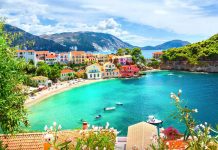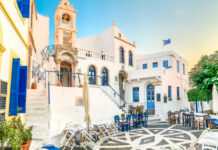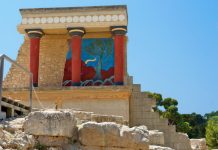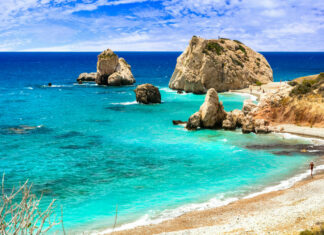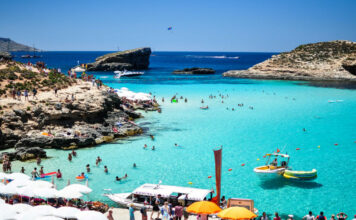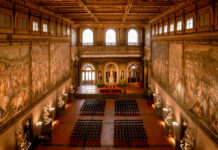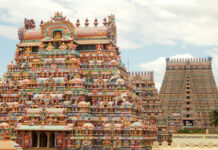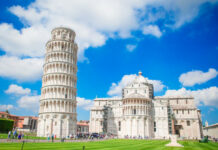Santorini: The Jewel of the Cyclades
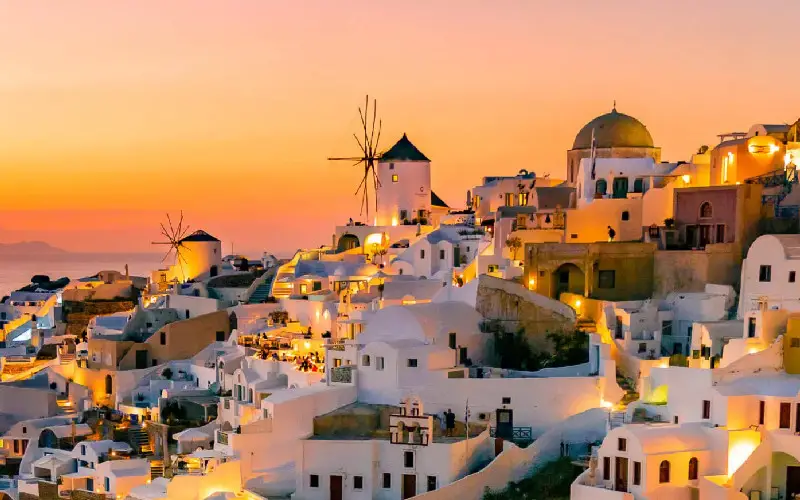
Santorini, often hailed as the crown jewel of the Cyclades, is renowned for its dramatic landscapes and white-washed buildings that cling to the cliffs. The island owes its unique topography to a volcanic eruption in the 16th century BC, which formed the crescent-shaped caldera. Visitors are captivated by the breathtaking sunsets in Oia, where the sun paints the sky in hues of pink and orange, creating a magical atmosphere. The island also boasts archaeological sites like Akrotiri, a Minoan Bronze Age settlement frozen in time, offering a glimpse into ancient history amid the modern elegance.
Mykonos: The Glamorous Playground
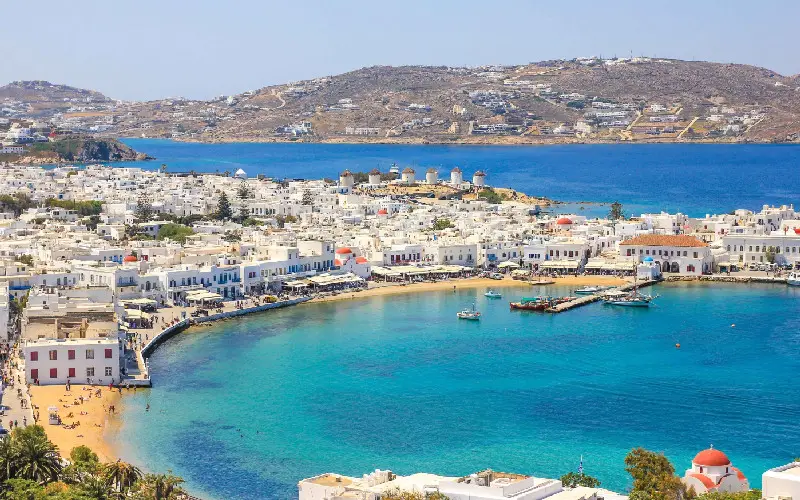
Known for its vibrant nightlife and cosmopolitan atmosphere, Mykonos is the party destination of the Aegean. Whitewashed buildings adorned with blue shutters line the narrow streets of Mykonos Town, where shops, cafes, and chic boutiques beckon visitors. The iconic windmills overlooking the sea add to the island’s charm. Mykonos is not just about the parties; its pristine beaches, such as Paradise and Super Paradise, are perfect for those seeking relaxation by the turquoise waters.
Crete: The Cradle of Minoan Civilization
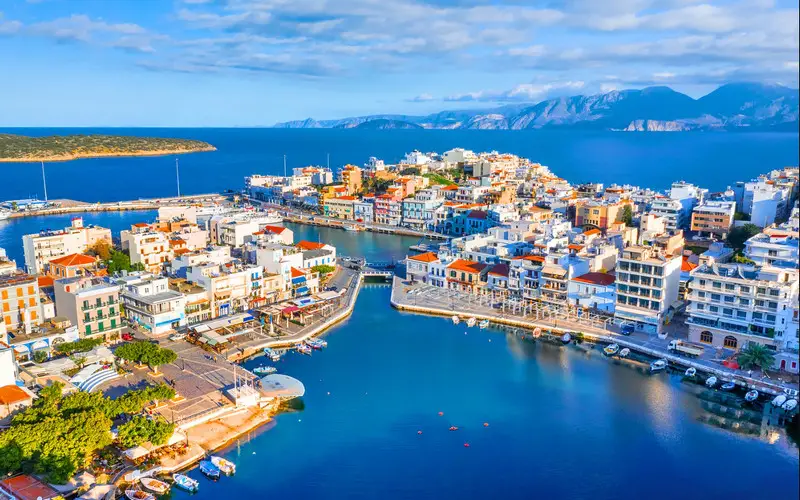
Crete, the largest of the Greek Islands, is a perfect place for all history buffs and those who love nature. The island is steeped in mythology, being the birthplace of Zeus, according to Greek legend. The ancient Minoan palace of Knossos, with its intricate frescoes and labyrinthine architecture, is a testament to the advanced civilization that thrived here over 3,000 years ago. Crete’s diverse landscapes encompass rugged mountains, fertile plateaus, and idyllic beaches. The Samaria Gorge, Europe’s longest gorge, is a hiking paradise that leads adventurous souls through stunning scenery.
Rhodes: Where Medieval Grandeur Meets Sun-Kissed Beaches
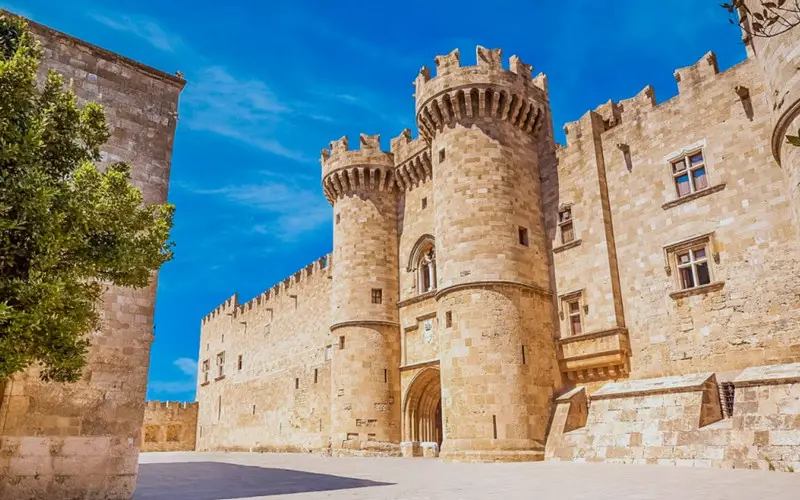
Rhodes, an island in the Dodecanese, is a blend of medieval grandeur and sun-soaked beaches. The medieval Old Town of Rhodes, a UNESCO World Heritage site, is encircled by massive walls and features the Palace of the Grand Master and the Street of the Knights. Lindos, with its acropolis perched atop a hill overlooking the sea, is a marvel of ancient architecture. On the contrary, the eastern coast offers pristine beaches like Tsambika and Faliraki, drawing sun-seekers from around the world.
Corfu: The Emerald Isle of the Ionian

Corfu, the emerald isle of the Ionian Sea, boasts a rich cultural heritage and lush landscapes. The Old Town of Corfu, a UNESCO-listed site, is a maze of narrow alleys and charming squares, reflecting Venetian, French, and British influences. The Achilleion Palace, built by Empress of Austria Elisabeth of Bavaria, offers panoramic views of the island. Corfu’s diverse terrain includes golden beaches, cypress-studded hills, and olive groves that produce some of the finest olive oil in Greece.
Zakynthos: Home to the Famous Shipwreck Beach
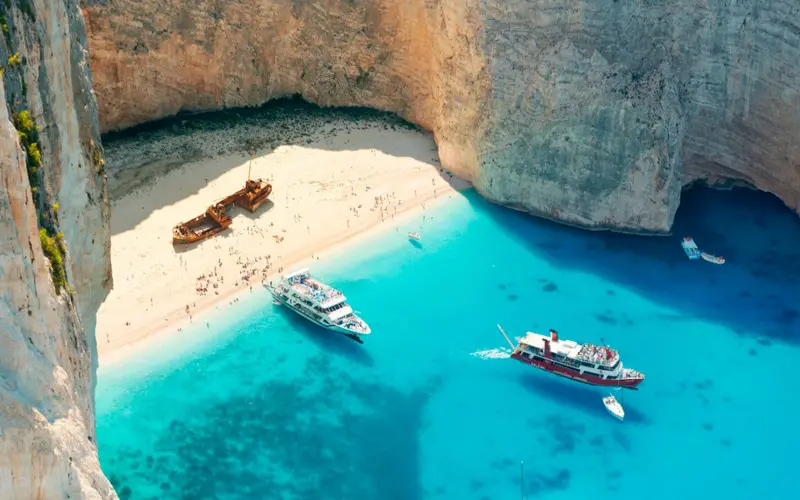
Zakynthos, also known as Zante, is famous for its stunning beaches and the iconic Shipwreck Beach (Navagio). Enclosed by towering limestone cliffs, Navagio Beach is accessible only by boat, providing a surreal setting with the wreckage of a ship washed ashore. The island’s electric blue caves, carved by the relentless sea, are a testament to the power of nature’s artistry. Loggerhead sea turtles also call Zakynthos home, particularly on the protected beaches of Laganas Bay.
Naxos: Where Myth Meets Modernity
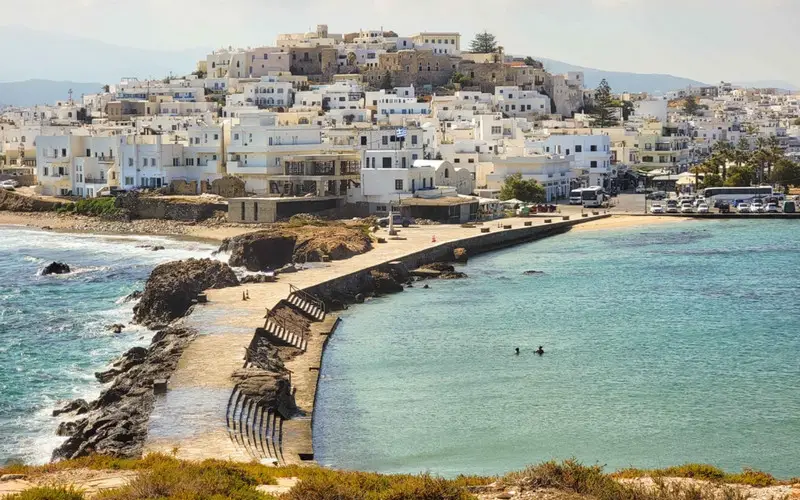
Naxos, the largest of the Cyclades, is a captivating blend of ancient myth and modern charm. The towering Portara, a massive marble doorway, stands as a sentinel to the island’s rich history and is associated with the temple of Apollo. Naxos Town, with its Venetian mansions and marble-paved streets, exudes a timeless elegance. The island’s interior reveals a landscape of rolling hills, fertile valleys, and traditional villages where local life unfolds at a leisurely pace.




